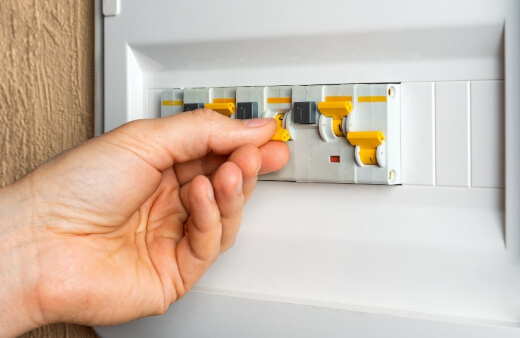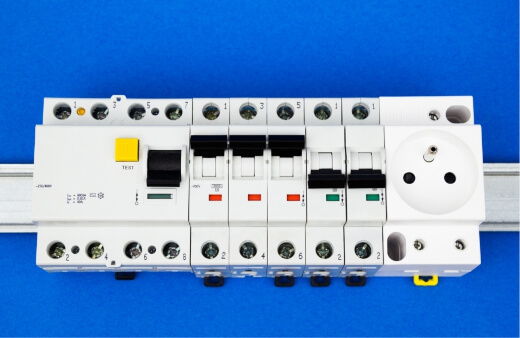An RCD or a Residual Current Device is a simple and effective way to secure your safety further when dealing with your home’s electrical components.
With modern-day living requiring modern tech to match the fast pace of our social and economic activities, tech has heavily integrated itself into our homes and family’s daily lives. With this comes the responsibility to make sure your electrics are soundly protected at all times.

What is an RCD?
Also known as safety switches, a residual current device can be a lifesaver if you or one of your family members came into contact with a livewire. Not only will an RCD protect you from electrocution, but it also reduces the risk of electrical fires within your home.
Let’s take a look at why you should consider upgrading your switchboard and installing an RCD in your home.
What is a Residual Current Device & How do they work?
RCD’s offer a unique level of protection versus standard fuses and circuit breakers. A residual current device is a sensitive safety switch that will consecutively monitor the current and flow of your home’s electricity and detect any abnormalities in the circuit.
If the intended path of the current changes, for example, if it passes through something irregular like a person, the RCD will immediately respond by diverting the electrical supply to that circuit within point three of a second. It will automatically switch all electricity off, which massively reduces the risk of death or severe injury.
What Causes an RCD to Trip?
It is vital to understand what a residual current device protects you from. Electrical faults or shorts can happen anytime and can pose a danger.
Your RCD switch will trip when it detects any of the following issues:
- Electrical Damage to an Appliance
- Exposed or Dangerous Wiring
- Circuit Overload
- Sudden Electrical Surges
- Ground Fault
Your RCD will switch off your power, which will help alert you to the problem and keep you and your family safe at all times.

What is RCD Protected?
What is RCD-protected will depend on the type of switch you have and where it is installed. There are three common types of RCD switches:
A Fixed RCD Switch
A fixed switch is installed directly onto your switchboard. This type of switch offers the highest protection level for your circuit as it encompasses all of your sockets and appliances.
A Socket Outlet RCD
A more compact switch that is designed to protect a specific socket onto which it is installed. It will only protect the appliances and circuits running from this socket.
A Portable RCD
This type of RCD can be easily moved and plugs into a socket of your choice. You can then plug appliances into that RCD path for protection. Again, it will only safeguard those appliances and circuits.
How Often should RCDs be Checked, Tested and Replaced?
Your residual current device should be checked and tested by a licensed technician every three months. The technician will then assess the switch and advise on whether it needs replacing or not.
Be sure to enlist the right professionals for the job to guarantee the utmost protection for your home.
Are RCDs Reliable?
Studies have shown that RCDs are 97% effective in protecting you, your family and your home from electrical faults.
If your RCD trips regularly, it may indicate a more significant electrical issue within your home. We recommend contacting a licensed specialist should you have this issue.
Trust Dave Fenech to Get Your Residual Current Device Today
With over 20 years of dedicated electrical servicing throughout Sydney, Dave Fenech Electrical can offer you premium and trustworthy quality for any of your Level 2 electrical servicing requirements. If you need a residual current device installed in your home or would like your RCD to get tested, be sure to contact our team of licensed technicians today.

